Text José Silva | Translation Jani Dunne
Chef António Nobre was born in 1969 in Beja, where he also studied. His mother was an excellent cook and, with her, he discovered the aromas and flavours of Alentejo cuisine. However, it was not before he was in the navy that he learnt he enjoyed cooking, so he took a course in cuisine and worked in the mess for the navy officers in the Cascais line. When he returned to Beja, he began working in a restaurant called “Muralha”, where he stayed for four years. Then he applied to work at the inn, got accepted, and stayed for also four years. After that, he worked at hotel “Melius” for another four years. Ever since the director at “Cartuxa” hotel heard about him fifteen years ago, he has been in that group, which transformed the hotel in the mean time, and opened the two M’ar de Ar hotels: Aqueduto and Muralhas, with António as the head of catering.
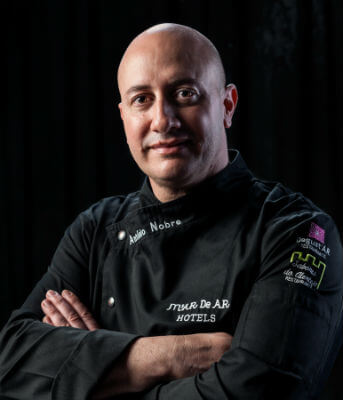
Chef António Nobre
Although he often travels throughout the country and also abroad – because he believes it to be important to stay up-to-date with current affairs in other countries, and what the latest trends are – he feels most at home in Alentejo. He promotes regional cuisine, because he thinks we should keep the flame of tradition alive. His motto is “Innovate tradition, all the while respecting the scents and flavours of the Portuguese cuisine, because they are part of our culture.” He does enjoy presenting his traditional Alentejo cuisine with sophistication and in different clothing, sometimes looking better and thus more appetising.
That said, our expectations were high when we recently visited “Degust’ar” restaurant, in hotel Mar de Ar Aqueduto, for a peaceful dinner in the most comfortable environment.
The restaurant is very well decorated; its refined simplicity put us at ease. In the entrance, we were welcomed by a counter, where a “sushi man” prepares a plethora of pieces of that cuisine, which has definitely taken over the country. Then the room, of a decent size, with charming corners, very well-set tables, and a good choice of ornaments. The service is remarkable, very competent and friendly. Also friendly was chef António Nobre when he came to the table to ask whether we were in a rush or not. Of course we were not, and so he gave the kitchen the green light for a very comprehensive meal he was already in the process of preparing. We started with appetisers including olives marinated with oregano, orange, lemon, olive oil, farinheira butter and bread.
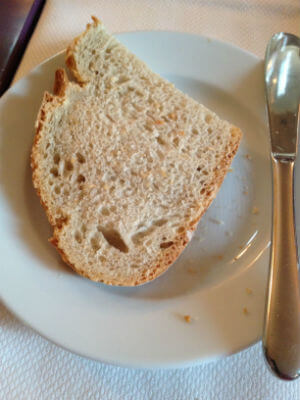
Bread – Photo by José Silva | All Rights Reserved
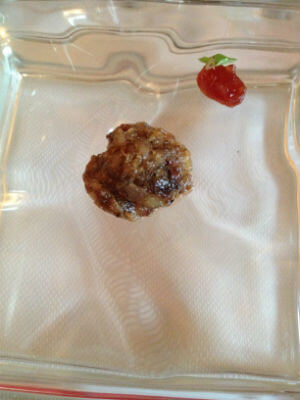
Botifarra de Azurara – Photo by José Silva | All Rights Reserved
We carried on dipping and grabbing until the little delicacies arrived: an interesting “botifarra” from Azaruja (a sort of longer breakfast sausage) with homemade tomato jam; delicious figs with Alentejo pork ham, chicory and honey vinaigrette from Serra de Portel; a few crunchy Alentejo risolle filled with pork scratchings and a salad of green asparagus, cherries and Amareleja raisins.
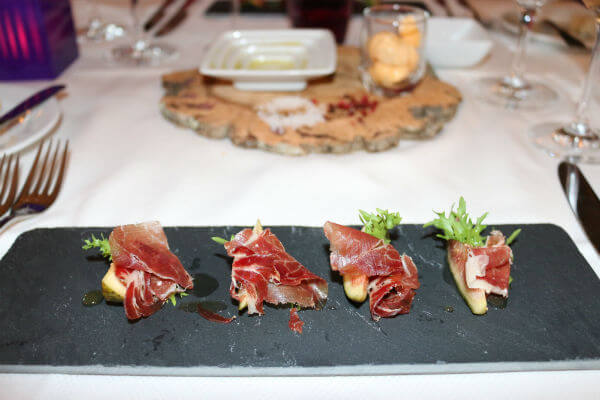
Figs with Alentejo pork ham © Blend All About Wine, Lda
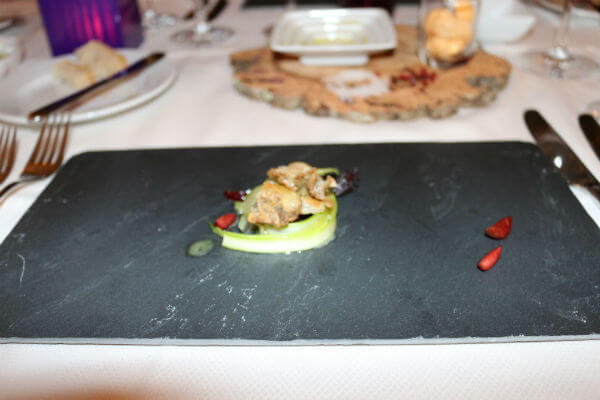
Crunchy Alentejo risolle © Blend All About Wine, Lda
We moved on to the soups – absolutely compulsory in Alentejo: chickpea soup with bóia (“ring float”), which consists in the fat from the pig’s belly – very tasty, and an excellent purslane soup with cottage cheese and poached quail egg.
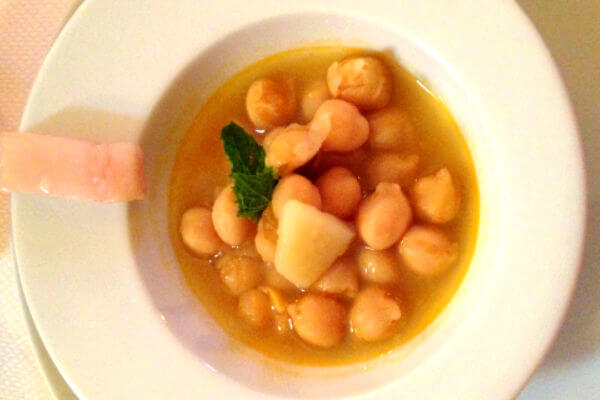
Chickpea soup – Photo by José Silva | All Rights Reserved
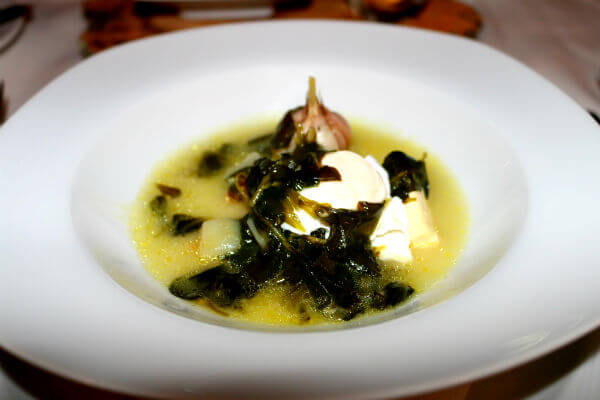
Purslane soup © Blend All About Wine, Lda
Our stomachs were already quite satisfied, but the main course was still to come. Although respecting the peace and quiet, it did not take long, to keep the rhythm of the meal going.
As a fish course, we had Alentejo-style conger eel soup with mint from the riverbank; it was filled with aromas, very tasty.
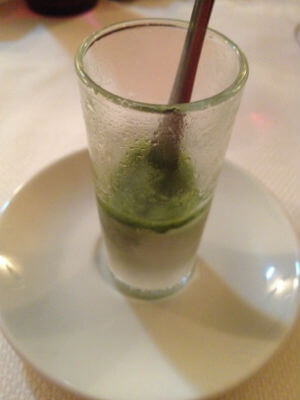
Pennyroyal sorbet – Photo by José Silva | All Rights Reserved
While we waited for the meat course, the pennyroyal sorbet did a proper job of cleansing our palate.
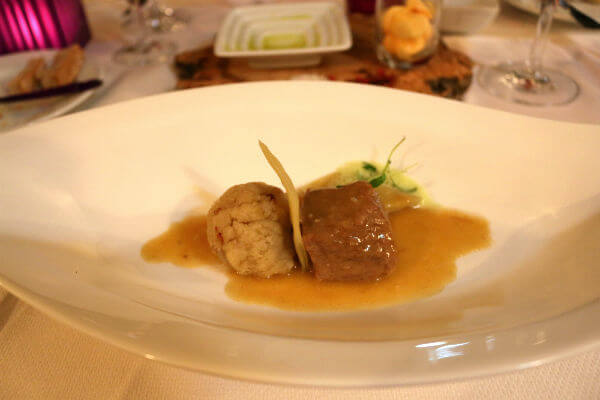
Mertolenga beef neck © Blend All About Wine, Lda
Then came the Mertolenga beef neck stewed slowly with haricot pods and “sawyer”-style migas (“fried breadcrumbs”), which really brought the Alentejo plane flavours to the plate. Excellent!
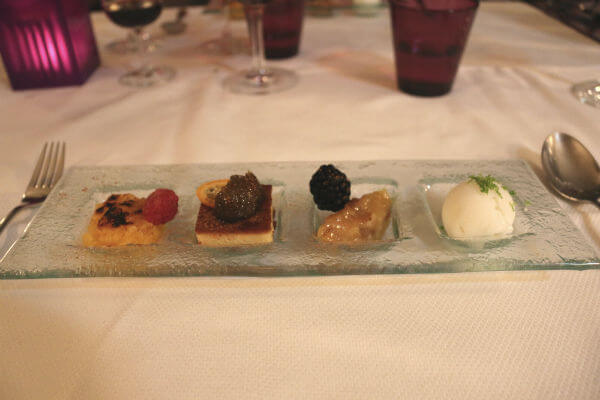
Trilogy of “conventual” sweets © Blend All About Wine, Lda
We were able to make some room for a trilogy of “conventual” sweets (originally made in convents) with lemon sorbet, which put the cherry on the cake on this trip down Alentejo flavours. With regard to wines, the challenge was to bring wines from other regions with us to see how well they would do with Alentejo food.
The white Alvarinho 2014 from Quinta de Curvos – very refreshing, with excellent acidity and balanced fruit – accompanied the appetisers very well; the most interesting was Gravato da Beira Interior palhete wine 2005 – very elegant, intense, refined – paid excellent company to the soups and the fish. Neck and neck.
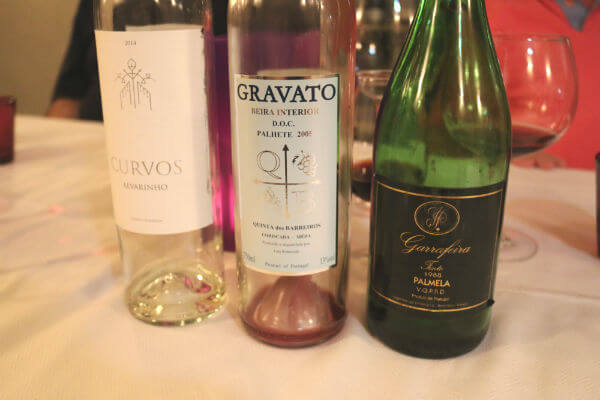
The Wines © Blend All About Wine, Lda
Lastly, an “old” Garrafeira Tinto 1988 from Palmela, by J. P. Vinhos. Although its strength was drained, it was a good match for the Mertolenga meat, and slowly but appetisingly, it evolved in the glass. It tasted so good.
Chef António Nobre returned to the table to find out how it had gone, and received a deserving genuine applause.
He must have caught a whiff of “M’ar de Ar”…
Contacts
M’AR De AR AQUEDUTO
Rua Cândido dos Reis, 72
7000-782 Évora
Tel: (+351) 266 740 700
Fax: (+351) 266 740 735
E-mail: geral@mardearhotels.com
Website: www.mardearhotels.com




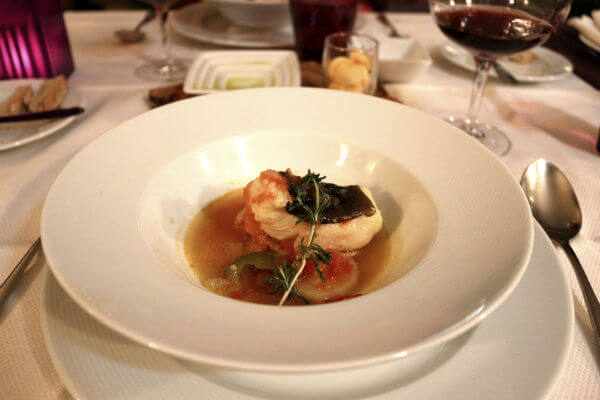
Leave a Reply